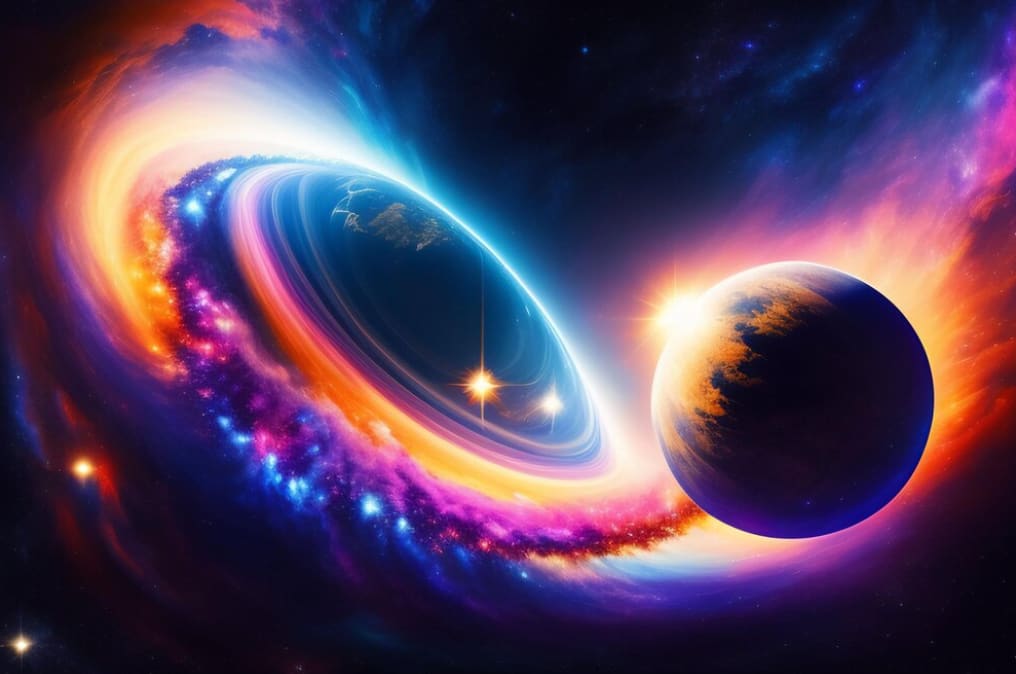In today’s age of cutting-edge Astrophysics, it becomes essential to thoroughly investigate the core principles of the Saha Ionization Equation. This fundamental mathematical instrument has left an indelible mark on the field of plasma physics and has greatly shaped our understanding of astrophysical enigmas. It serves as the cornerstone of a crucial branch of Astrophysics and occupies a central position in deciphering the enigmatic spectra of heavenly objects.
For individuals captivated by the intricacies of the Saha Ionization Equation and its examination of matter in extreme environments, it proves worthwhile to explore its significance when scrutinizing celestial bodies such as the farthest satellite from Earth.
Delving into History
The inception of stellar spectral studies can be traced back to the discovery of the Fraunhofer lines in 1814. The distinctive spectral hallmark of stars evolved from these early observations. Each celestial body showcased unique strength in its elemental spectral lines despite their diverse spectral compositions, leading to a fascinating astronomical puzzle.
Before the advent of atomic and radiation theories, these variations in spectral sequences were attributed to differences in stellar compositions. However, today, we know these spectral variations are predominantly driven by temperature variances. Let’s embark on a journey through time to understand how Indian Astrophysicist Meghnad Saha contributed to this significant discovery.
- In 1920, Saha’s ground-breaking ionization theory, which applied Bohr’s atomic theory, introduced a new dimension to astrophysics. Ionization, a process where an electron gains sufficient energy to distance itself from its nucleus, was mathematically defined by Saha;
- He produced a formula illustrating how the excitation and ionization of stellar atmospheres were contingent on temperature and pressure conditions, not mere composition. His equation played a crucial role in establishing the Astrophysics branch of Stellar Spectroscopy.
Comprehending the Saha Ionization Equation
The Saha Ionization Equation—an amalgamation of principles from quantum and statistical mechanics—explains the spectral classification of stars. It assesses the ionization level of a gas in thermal equilibrium, linking it to the gas’s pressure and temperature.

Key elements influencing the ionization of gas as per the Saha Ionization Equation include:
| Property | Description |
|---|---|
| Ionization Energy | Initially low, but increases with the temperature surpassing the ionization energy threshold. |
| Temperature | A rise in temperature leads to an abrupt increase in ionization degree, transitioning the gas into a plasma state. |
| Number Density of Ions | As the ion count increases, the likelihood of electron recombination rises, affecting the neutralization rate. |
| Effect on Ionization Ratio | Increasing number density of ions reduces the ionization ratio as more atoms revert to a neutral state. |
The Influence of Pressure on Ionization
Saha emphasized the profound impact of pressure on a gas’s ionization degree—an aspect previously overlooked. His theory, published in 1921 in the Proceedings of the Royal Society, utilized this concept to elucidate the stellar spectral sequence.
Saha revolutionized the understanding of spectral studies, arguing that individual stellar characteristics could not solely be attributed to specific elements like hydrogen, helium, or carbon. He posited that varying conditions within each celestial body dictated which elements could be excited enough to emit their characteristic spectral lines.
The Application of the Saha Ionization Equation
Saha’s equation unravels how a gas progresses to a plasma state at extraordinarily high temperatures and low densities of charged particles. This transformation is often observed in astronomical bodies recording millions of degrees of temperature and minimal atomic densities. These unique conditions have led to the classification of plasma as the fourth state of matter.
Conclusion
The Saha Ionization Equation— a pivotal tool in Astrophysics— has irrefutably redefined the understanding of stellar spectroscopy and plasma physics. It has not only helped decode the mysteries of the universe but also laid a solid foundation for future astrophysical research. As we continue to unravel the complexities of the cosmos, the role of the Saha Ionization Equation will undoubtedly remain instrumental in enhancing our understanding of the universe’s celestial bodies.
The Saha Ionization Equation has played a pivotal part in advancing our understanding of the cosmos. It guided us towards the reality that the spectral variations observed in celestial bodies are not solely due to composition, but rather due to disparities in temperature and pressure conditions. This monumental contribution to astrophysics and plasma physics has allowed us to classify stars more accurately and has elevated our comprehension of plasma—the fourth state of matter. As we continue exploring the vast universe, the insights provided by the Saha Ionization Equation will remain a beacon in our quest for knowledge.





